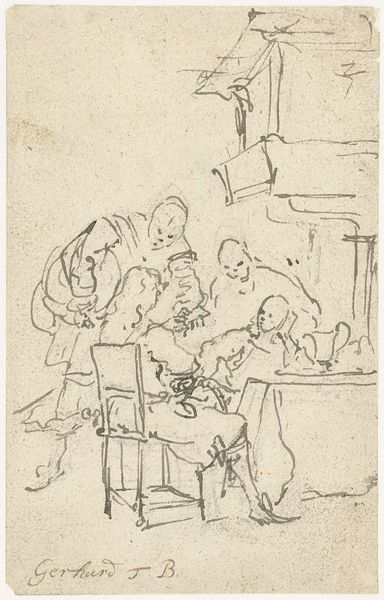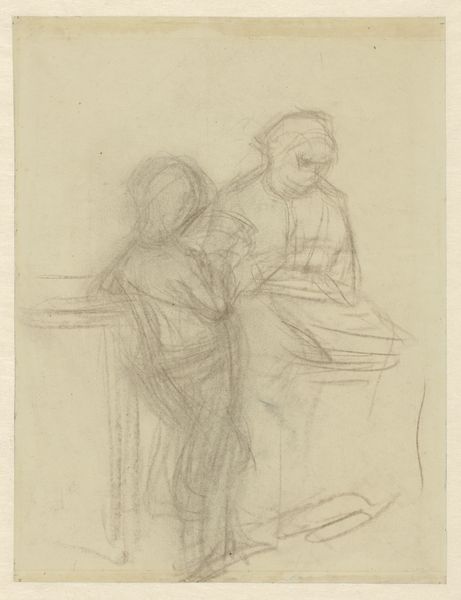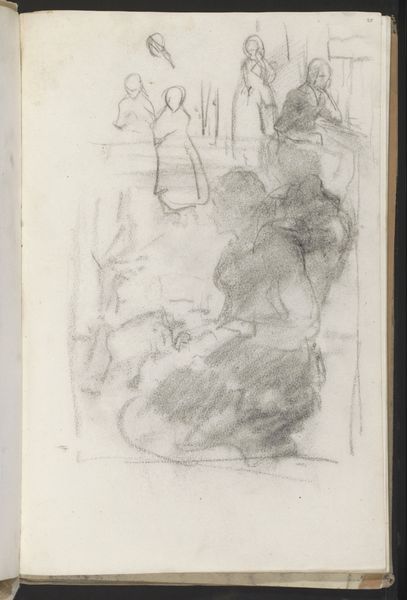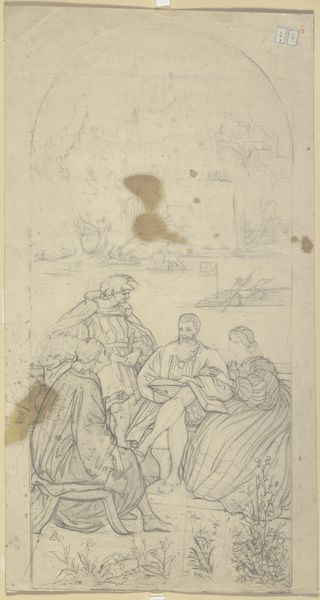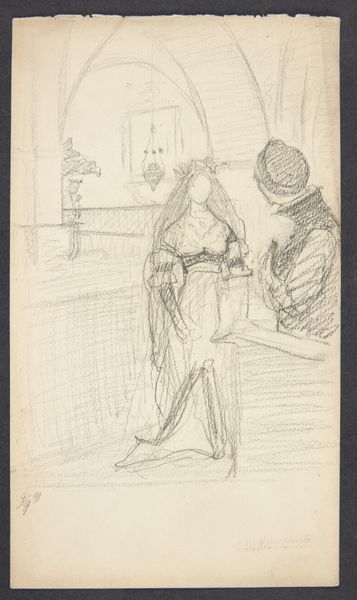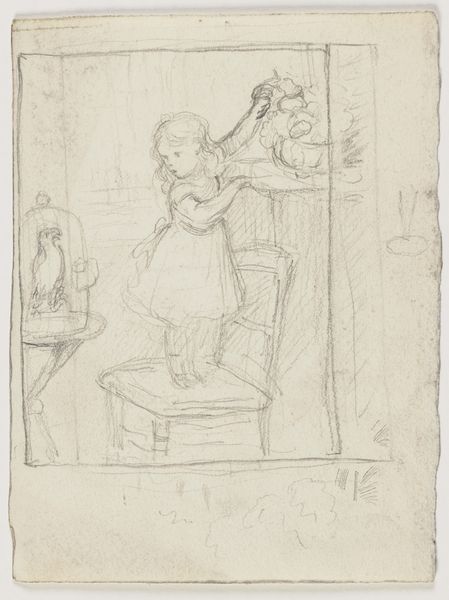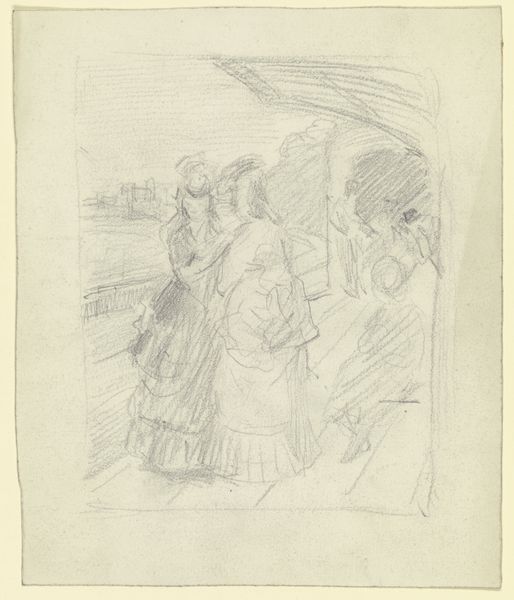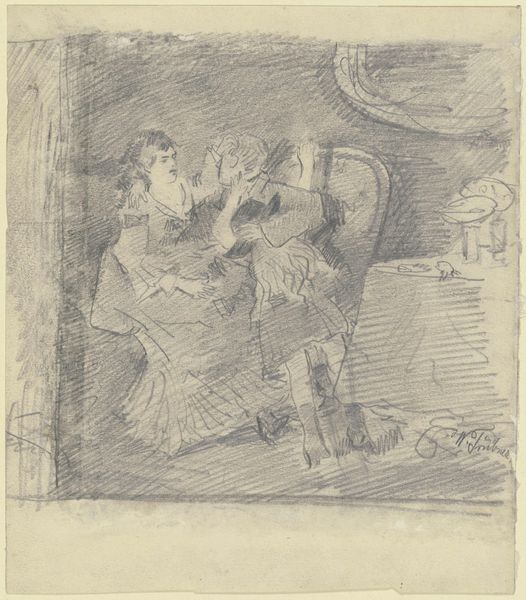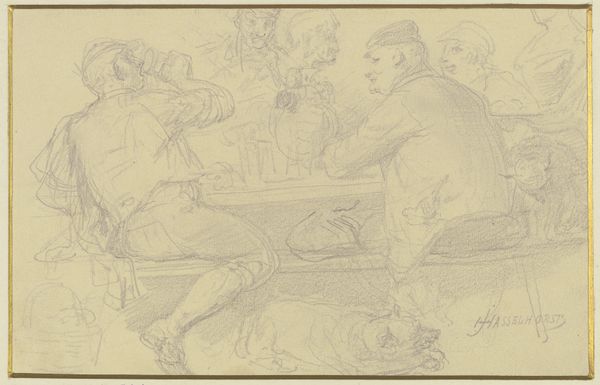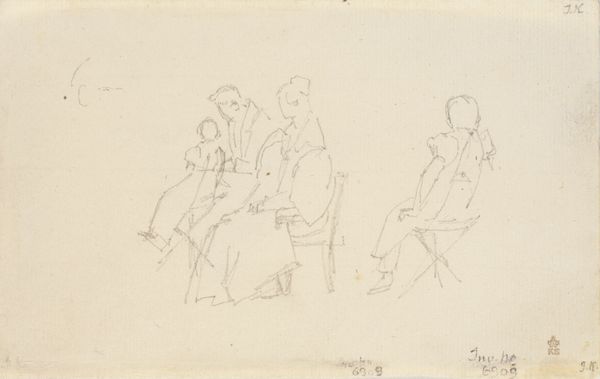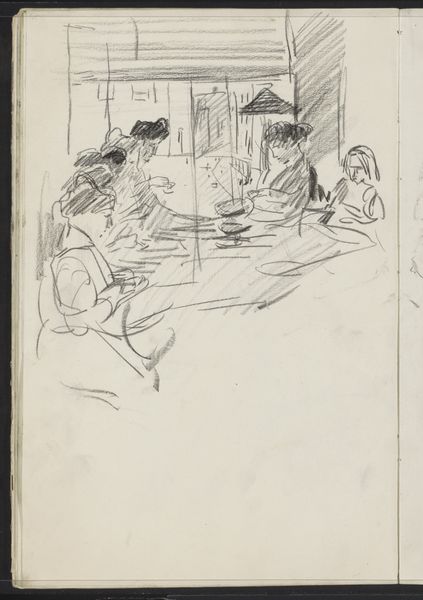
drawing, paper, pencil
#
portrait
#
drawing
#
16_19th-century
#
pencil sketch
#
figuration
#
paper
#
pencil
#
genre-painting
Copyright: Public Domain
Editor: This drawing by Otto Scholderer, called *Leierkastenmann mit Affe vor Zuschauern*, seems to be a pencil sketch on paper. It has such an interesting composition, with the layering of the audience above the main characters. What do you see in this piece? Curator: Primarily, I observe the dialectical interplay of foreground and background. Notice how the artist employs varied line weights to differentiate between the principal figures—the organ grinder and his monkey—and the observing crowd. The sketchy, almost ethereal quality of the children above creates a fascinating contrast with the more defined lines used for the organ grinder's form. Editor: That’s a great point about the line weights creating the depth. Why do you think he made that decision? Curator: The distribution of light and shadow, though subtle, draws our eye to the performance, framing it almost as a spectacle within a spectacle. Observe, for example, how the shaded areas are deployed strategically to create depth and direct the viewer's gaze. Note the implied shapes too; what seems unfinished or rudimentary adds an intriguing dimension. It prompts the viewer to participate in the completion of the artistic idea. Editor: I never considered the ‘unfinished’ parts adding to the composition. It gives it an interesting texture. Is there something to the shapes created around the human figures too? Curator: Precisely! The negative space functions almost as an active participant in defining the subjects, don't you agree? There’s a compositional balance achieved here through both presence and absence of lines. Also consider how Scholderer, through a rigorous deployment of technique and form, asks us to contemplate not just the ‘what’ of the drawing but also the ‘how’. Editor: This has really given me a fresh outlook on how to interpret simple sketches and the important role of visual components. Thank you! Curator: My pleasure. Approaching the artwork from different analytical points is always rewarding.
Comments
No comments
Be the first to comment and join the conversation on the ultimate creative platform.
